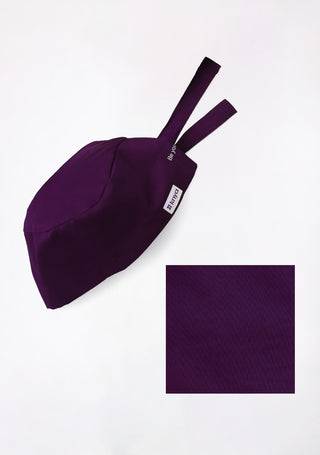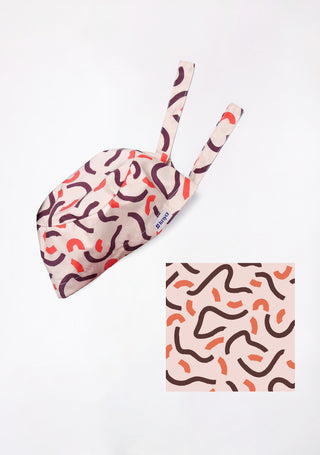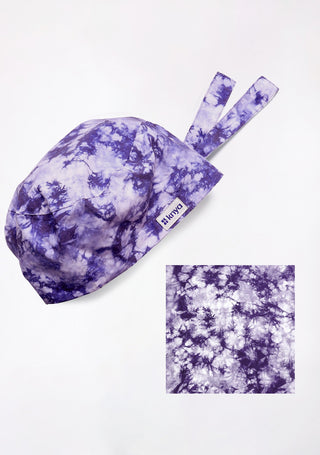A lab coat is part of professional clothing in many workplaces such as hospitals, laboratories, and research centers. It is used by doctors, medical students, scientists, and technicians. The coat keeps the body covered and protected during work. It also gives a clean and neat appearance. Regular washing and proper storage can help keep the coat in good shape. This guide explains how to clean, dry, store, and handle a lab coat to make it last longer. Knya offers lab coats that are designed for daily use and are easy to care for.
Ready to explore our amazing scrubs collection? Browse the best here.
Fabric of Lab Coats
Lab coats are mostly made of cotton, polyester, or a mix of both. These materials are strong and can be washed many times. They can also handle light chemical exposure. But if not cleaned properly, the fabric can wear out, lose color, or shrink. Gentle cleaning helps keep the coat in better condition.
Always Check the Care Label
Each lab coat comes with a care label. This small label has instructions from the maker. It shows how to wash, dry, and iron the coat. Some lab coats can be washed at home. Others may need dry cleaning. Always follow the care label to avoid damage.
Steps to Wash the Lab Coat
1. Pre-Treat Any Stains
Lab coats may get stains from chemicals, ink, or food. Before putting the coat in the machine, treat any stains. Use a mild soap or stain remover. Rub the stained area lightly and let it sit for a few minutes.
2. Use Cold Water
Washing in cold water keeps the fabric safe. Hot water can cause shrinking and color fading. Cold water keeps the size and color of the coat the same.
3. Choose a Gentle Detergent
Pick a detergent that is made for delicate clothes. Strong chemicals in some detergents can damage the coat’s fabric. A mild detergent is better for regular washing.
4. Wash in a Mesh Laundry Bag
Place the coat in a laundry bag before putting it in the washing machine. This keeps the coat from getting tangled with other clothes. It also helps the coat hold its shape.
5. Avoid Overloading the Machine
Washing too many clothes at once may prevent proper cleaning. Keep the load light so the lab coat gets enough space to move in the machine.
Drying the Lab Coat
1. Hang to Air Dry
Letting the coat dry in the air is best. Hang it on a hanger or drying rack. Avoid keeping it in direct sunlight for long hours, as this can fade the fabric.
2. Avoid Using High Heat in Dryers
Dryers can make fabric shrink or become stiff. If using a dryer, choose the lowest heat setting. Remove the coat while it is still slightly damp and hang it to finish drying.
Click here to explore comfortable lab coats and discover our complete collection of comfortable and stylish medical apparel
Ironing and Pressing
A lab coat may get wrinkles after washing. Ironing helps it look neat. Always check the care label for safe ironing temperature. Cotton coats may need medium to high heat. Polyester coats should be ironed at low heat. Avoid ironing directly over embroidery or logos. Use steam to remove stubborn wrinkles if needed.
Storing the Lab Coat
Proper storage keeps the lab coat in good shape when not in use.
- Always hang the coat on a hanger
- Avoid folding or stuffing in a drawer
- Store in a clean, dry place
- Use a garment bag if storing for a long time
- Make sure the coat is dry before storing to avoid mildew or smell
Handling Chemical Exposure
If the lab coat is exposed to strong chemicals or biological fluids, it must be rinsed right away. Do not delay washing in such cases. Some coats may need special cleaning if the substance is dangerous. Follow all workplace safety rules in such situations.
When to Replace a Lab Coat
Even with good care, a lab coat can wear out. Signs of wear include:
- Fading color
- Thin or torn fabric
- Loose seams
- Stubborn stains
If the coat looks worn, it should be replaced. A fresh lab coat gives a better appearance and ensures proper protection. Knya offers coats that are easy to maintain and made for long-term use.
Choosing the Right Lab Coat
Selecting the right lab coat is also part of care. Knya offers coats made from fabric that is durable and washable. Cotton-polyester blends are often preferred. These coats are light, easy to clean, and suitable for long shifts. Good fit is also necessary to allow free movement while working.
Why Polyester Lab Coats Are Useful
Polyester lab coats have some special features:
- Do not wrinkle easily
- Dry quickly
- Resist stains better
- Last longer with regular washing
Professionals who work in busy or high-risk places may choose polyester for these reasons. Knya provides polyester-based coats that are simple to care for and keep a clean appearance.
Conclusion
A lab coat is part of the professional uniform in healthcare and laboratory fields. Regular washing, correct drying, proper ironing, and correct storage can make the coat last longer. A clean lab coat shows readiness and discipline at work. Knya lab coats are designed to meet everyday needs. They are easy to care for and keep a clean look for longer periods. Following the care steps explained in this guide can help keep the coat in good condition for a long time.












